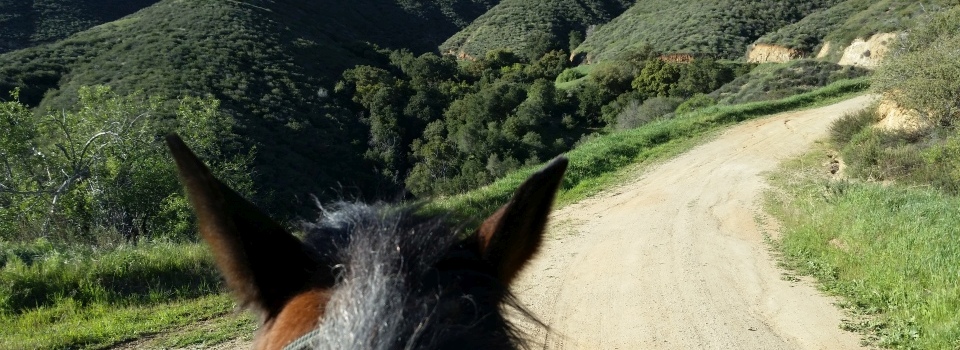Chaps for the head
Chaps, or chaparejos, are coverings for the legs, originally intended to protect riders going through thickets of shrubs. But shrubs come in all heights, even here in southern California in the land of chaparral, and a helmet protects you from the higher ones.

This is coast live oak, a tree with stiff branches and leathery, spiny leaves. Horses generally know how tall they are, but don’t have a good sense of how much higher you are when you’re in the saddle, and so you learn to duck. And it’s nice to know that your helmet protects you from all the stray branches.
Sure, you could wear a cowboy hat—oh, and use the chinstrap to make sure it’s not ripped off your head (it does have a chinstrap, right?)—but hats cost about the same as helmets, they don’t protect your head as well, and they tend to get ripped up a lot faster.
Trust
There are plenty of riders and trainers who demand blind obedience from horses. (For the horses’ sake, it would probably be better if these folks didn’t wear helmets.) For the rest of us, an important part of our relationship with horses is trust, and people will tell you that they don’t wear a helmet because they trust their horse.
A friend once wrote of her horse, “My life is in his hands.” That’s certainly true, and most people who work with horses understand this. But I responded, “It is also correct to say that his life is in your hands.” We all know many ways our horses could kill us. But it turns out that our horses have misconceptions about how we could kill them.
What will happen to your horse if you are killed or severely impaired by a traumatic brain injury? Yes, there are sport horses that could be easily sold and continue their careers with new owners. There are owners whose families have the resources to take care of a horse when the owner is unable to. But the majority of horses are one sale away from the kill buyer. It doesn’t matter that we don’t play the predator and kill and eat them. The commonest way we kill our horses is by not being there when they need us.
The majority of horses are one sale away from the kill buyer.
When I ride Buddy, I know that he goes out of his way to avoid killing me, and there are times when he has believed himself to be in great danger that he clearly wanted to take me to safety with him. I trust him. But I know that he can make bad decisions.
Buddy doesn’t expect me to kill him (even when I squirt medicine into his eye). He trusts me. He may not realize that I, too, can make bad decisions, but I know it.
When I wear a helmet, I am acknowledging that he can make bad decisions. When I don’t wear a helmet, I am making a bad decision, a decision that in the worst case will result in his death. I owe him more than that.
